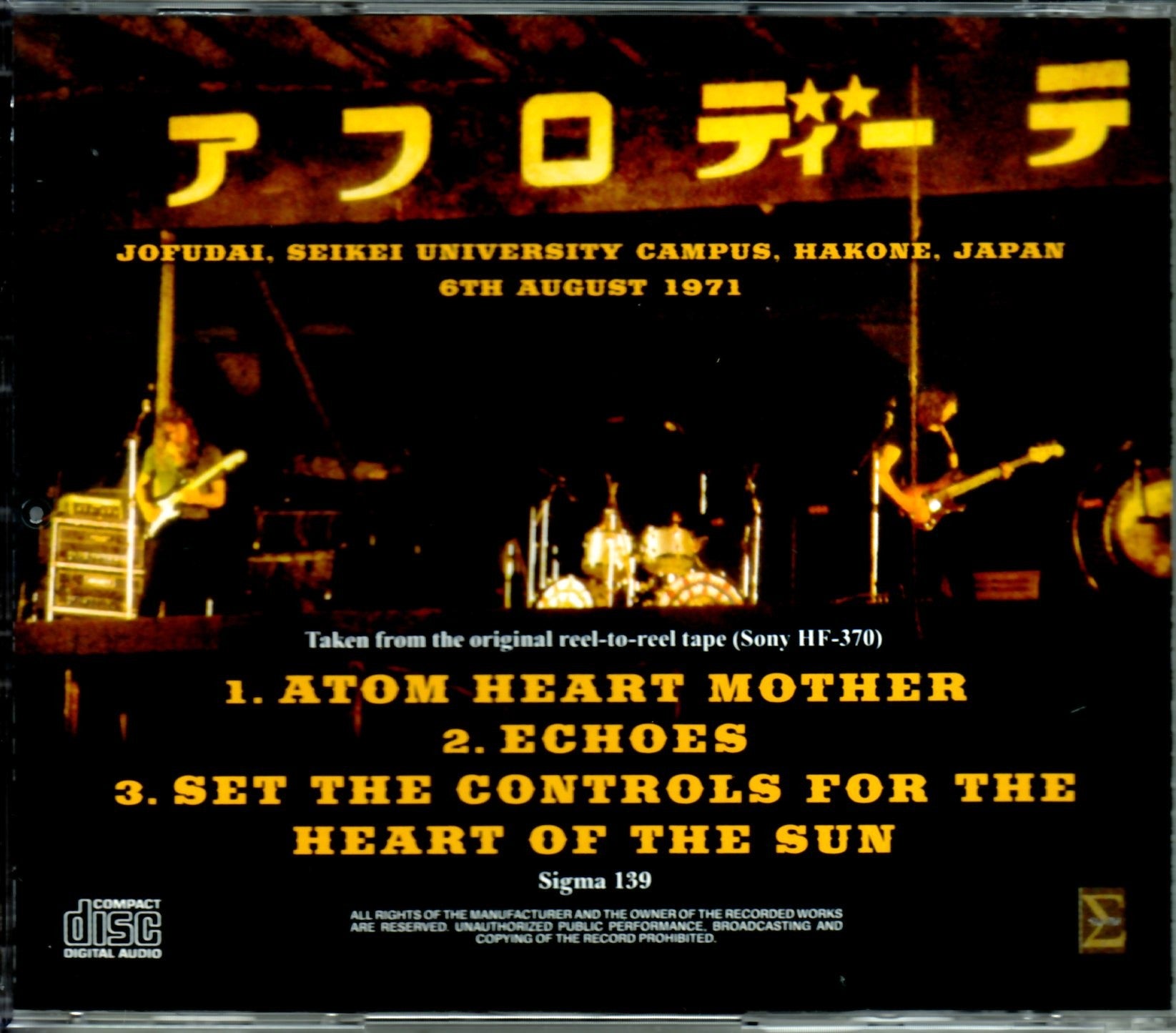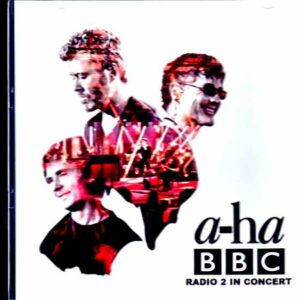Description
“HAKONE APHRODITE 1971: MASTER RECORDING” reached the planned number of copies and sold out immediately as soon as its release was announced three weeks ago. It has already become difficult to obtain second-hand copies, but this week we will be releasing a new work that approaches the origin of the sound of this masterpiece!! First of all, let’s take a look at the recent release of “HAKONE APHRODITE 1971: MASTER RECORDING (*hereafter”) Let’s review the differences between the album “Toshimasu)” and this work. The tape used for the previously released edition was a master reel tape recorded locally at Hakone Aphrodite in the summer of 1971 (hereinafter referred to as Tape A), which was later recorded by another person as a 60-minute reel. We used a tape with only three songs extracted in their entirety (*hereafter referred to as tape B). However, it is known that when this reel tape B was produced from master reel tape A, pseudo-stereo processing was performed by the engineer, and tape A was originally recorded in monaural. Of course, if you have listened to Tape B, that is, the previously released version, you will have realized that the pseudo-stereo finish was very good, and in the early 1970s there was a specialist who could perform this kind of sound processing. I am once again surprised that the engineer (*the actual provider of Tape B) had the equipment, but on the other hand, what kind of sound did Master Reel Tape A have? This sparks my interest in the original recorded sound and a simple question. Therefore, this time, in order to reproduce this “original sound before pseudo-stereo processing”, our label uses a well-maintained domestic reel deck with perfect movement preservation and the latest equipment in 2015, and tapes from the actual reel tape B. The attempt to restore the original sound of Tape A was successful! Now, how did they restore the original sound of Tape A? For those who have the previously released version, please read the 5 minutes of “Atom Shinbo”. Please check 01 seconds. Here, you should be able to confirm that Gilmore’s (Rick?) voice at the beginning of the chorus part, “♪Ahh..”, is heard only for a moment in the right channel. This is the very trace of pseudo-stereo production, and you can see from this that when creating Tape B from Tape A, the engineer added the components on the right. In other words, the sound of the left channel is presumed to be the sound recorded on mono master tape A, which was recorded locally in Hakone, and this work revives the sound of the master with this left channel as the main axis. In addition, the previously released version was completely recorded without leaving a single sound recorded on Tape B, so this time it has been converted to monaural and has undergone the latest digital remastering, giving it a completely new sound image. This is a major feature. What is particularly notable is that by applying appropriate equalization processing to the high frequency range, the overall impression of the sound of the previous releases, which was slightly lumpy and flat, was eliminated, and a more neat and sharp sound came out. Also, by converting the sound source itself to monaural, there is no reverberation in the sound, which means that each instrument’s sound comes out clearly without any blurring, which is a major topic of this work. Also, the order of the songs was changed this time, with “Echoes” and “Taiyou Hymn” being recorded. The songs were played in this order in the most recent live performance in Osaka on August 9th, so I have verified that if you want to listen to the master original sound, it would be more natural to listen to it in this order. Let me give you a quick overview of the differences between each song on the previously released version and this work.Firstly, as mentioned above, “Atomic Shinbo” is the song “♪Ahh.” at 5 minutes 01 seconds on the previously released version. The voice at the beginning of the chorus part that briefly appeared only on the right channel has disappeared. This is natural since the right channel component has been eliminated. However, the left channel of this song was not solid either, and there were some parts where the sound skipped slightly due to the delay processing used during pseudo-stereo conversion. Specifically, 00 minutes 15 seconds, 2 minutes 06 seconds, 5 minutes 01 seconds, 13 minutes 09 seconds, 13 minutes 23 seconds, 14 minutes 43 seconds, 15 minutes 13 seconds, etc. of the previously released records correspond, but these has been patched with the right channel sound to perfectly correct the skipping, so you can follow the progress of the song with a very stable listening experience from beginning to end. Also, because the sound has no reverberation, each sound can be heard more directly during the guitar solo that starts at 3:13 and the twin chorus that follows, creating a more focused sound than pseudo-stereo. It is designed for you to enjoy. “Echoes”, which first appeared in the uncut complete version, has also been carefully adjusted so that its overall image shines at its highest value. The most noticeable change is the subtle sound fluctuation (pitch deviation) due to aging of tape B, which occurred frequently from around 17 minutes 58 seconds to around 19 minutes 00 seconds in the latter half of the already released version. This was carefully pinpointed digitally corrected using the latest equipment, and in this work we succeeded in recovering a precise sound image that is no exaggeration to say that it is the ultimate. In addition, the sound blurring at 16 minutes and 46 seconds and the crackling noise at 47 seconds, one second later, have been completely corrected and restored to their original state. Furthermore, the sound image had a slightly higher pitch in the last 3 minutes (*This is due to aging of the tape, but since the previous release was a record that focused on transferring the original appearance, I dared to leave it as it was. (which was left behind) has been perfectly corrected this time, so it can be said that all the pitch problems that this tape fundamentally had have been completely resolved. In addition, the hollow sound image and slight sound breakage in the left channel that existed around 13 minutes 40 seconds and 14 minutes 13 seconds to 37 seconds on the previously released discs have been treated accurately to the extent that they do not affect the actual sound. There is. As a result, the distorted sound image that had been distorted as “wowwow…” is revived as a straight-forward sound, and there is also a scene in the middle of the song where the rhythm comes to the fore (* around 8 minutes 52 seconds? (around 12 minutes 07 seconds), the focus of the sound is fixed, and a powerful midrange sound cluster approaches with close-range sound without blur. Furthermore, by returning to monaural, the voices of the audience around the recorder can be heard more clearly, which is a unique characteristic, which is also a major attraction of this work (*Opening 00 minutes 13 seconds) ?It’s in at 24 seconds.” Hey, hey, is Echoes included in “Mystery”? Don’t you know?” and at around 5 minutes and 30 seconds of “Atomic Heart Mother,” “Are there about two more?” etc.). Also, as you probably know, the first lyric of this song performed in Hakone does not start with “Overhead the albatross…” but with “♪ Planets meeting face to face…” This is the last performance of the song, with traces of the early version of the song “The Return Of The Son Of Nothing” remaining. Immediately after Hakone Aphrodite, during the autumn European tour that starts the following September 18th, the completed lyrics recorded on the album from the first Montreux performance will be performed (*This situation can be seen in “MONTREUX 1971 ( Sigma 113)), this rare song is uncut, including the song introduction scene, and the pleasure of listening to it with the special monaural sound that is closest to the master original sound is unique to this work. You could say it’s an advantage. Of course, the first verse of this old version has no reverb and the sound is diffused only by the genuine echo that was on Gilmore’s microphone that day, so you can enjoy the reverberation that is closest to the original sound of that day. You can see it. “Sun Hymn”, which appeared for the first time in history, was also recorded at this location. There were no particular problems with this song on the left and right channels even on the previously released version, but the only problem was the input weakness on the right channel, which gradually occurred from around 12 minutes 09 seconds to 16 seconds, and from around 29 seconds to 32 seconds. There was. However, this time, the input on the right side has been eliminated to begin with, allowing you to enjoy an even more stable listening experience. The sound of this song on the previous release was very attractive, but here you can hear the diffused sound of the introductory mallet hits, Roger’s voice like a spell, and the eerie melody that drifts from beginning to end, all connected supplely. The dynamic explosion gives off a wave and euphoria that is completely different from the previously released version, and the way the heartbeat of the song is exposed in the middle is a surprise that can only be found in a sound that revives the original sound of Reel Master. Masu. One last thing I would like to add is that this work is by no means an upper version of “HAKONE APHRODITE 1971: MASTER RECORDING”. This is because the sound quality of the two sound sources is fundamentally different. For example, even in the bird chirping scene in “Echoes,” the special monaural sound of this work has a very strong attack on each note. In contrast, on the previously released version, the sound progresses with excellent three-dimensional sound while leaving just the right amount of reverberation throughout the range, giving the performance a dynamic and realistic feel that can only be achieved with pseudo-stereo. On the other hand, this work’s delicate sound is appealing because the sound output is perfectly focused, and even though it is monaural, the precise sound image that allows you to follow even the details of polyphony is reminiscent of Floyd in Hakone in 1971. It conveys the power of the actual sound at its highest value, which is worthy of being enjoyed. The pitch and sound fluctuations that were completely eliminated by equalization also bring out the crisp sound of each instrument and voice, completely regaining the original brilliance that Tape B had lost during its production process. The reason why this work is labeled as “Remastered & Restored” rather than simply as an upper version is to suggest that it is a disc that brings out a different charm, and I was able to obtain the previously released version the other day. This is because it is a fulfilling title that will satisfy both those who were able to do it and those who were not. Please enjoy the new “Hakone 71” this weekend. Jofudai, Seikei University Campus, Hakone, Kanagawa, Japan 6th August 1971 Taken from the original reel-to-reel tape(Sony HF-370) (54:20) 1. Atom Heart Mother 2. Echoes 3. Set The Controls For The Heart Of The Sun







Reviews
There are no reviews yet.